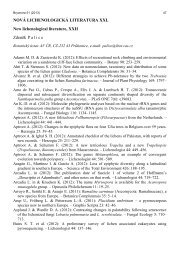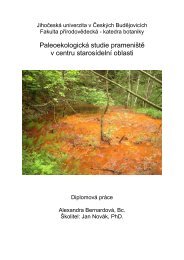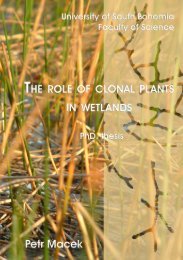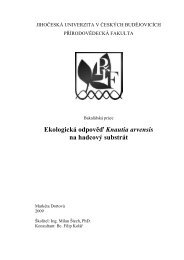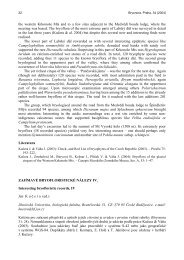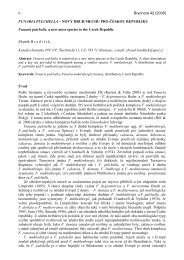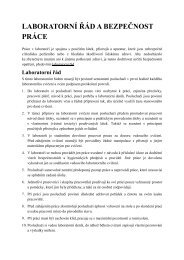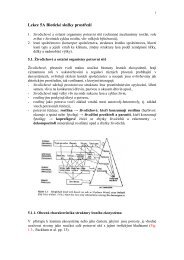Molecular phylogeny and taxonomic revision of chaetophoralean ...
Molecular phylogeny and taxonomic revision of chaetophoralean ...
Molecular phylogeny and taxonomic revision of chaetophoralean ...
Create successful ePaper yourself
Turn your PDF publications into a flip-book with our unique Google optimized e-Paper software.
Introduction 6<br />
depending on the <strong>taxonomic</strong> rank at which one wishes to detect the NHS. However, at<br />
least one general rule will come into effect: The number <strong>of</strong> NHSs will probably<br />
decrease with a greater sample <strong>of</strong> taxa within the dataset. This means, if an NHS<br />
synapomorphy search is to be performed, for example, for a genus in the Ulvales,<br />
Chlorophyta (e.g. Acrochaete), the highest number <strong>of</strong> the unique signatures,<br />
morphological or molecular, would most likely be found within the Ulvaceae than at<br />
higher <strong>taxonomic</strong>al levels (i.e. within the Ulvales, the Ulvophyceae or the Chlorophyta<br />
or even within the Viridiplantae). In other words, the delimitation <strong>of</strong> the taxon level<br />
within which the synapomorphy search is performed is probably the most important<br />
factor.<br />
Fig. 4.: Non Homoplasious Synapomorphies (NHS) <strong>of</strong> the genus Monomorphina (Euglenophyceae).<br />
1) NHS morphological synapomorphy – pellicle – demonstrated for different species <strong>of</strong><br />
Monomorphina: A) Monomorphina striata (CCAP 1261/9), B) M. ovata (SAG 1244-5), C) M.<br />
reeuwykiana (M 1768), D) M. pyrum (UTEX 2354). All scale bars ═ 10 μm. 2) One <strong>of</strong> the NHS<br />
molecular synapomorphies in the SSU rRNA. Monomorphina spp. (in alignment) as well as C<br />
(the third nucleotide in the spacer helices 45-47, in alignment <strong>and</strong> in secondary structure<br />
diagram) are in bold. Note that unique synapomorphies were defined within Euglenophyceae,<br />
<strong>and</strong> that the secondary structure is based on Monomorphina pyrum. (simplified according to<br />
Marin et al. 2003)<br />
More than 20 years have passed since the first molecular approaches had been<br />
introduced in algal taxonomy <strong>and</strong> the conflict between the phenetic system (groupings<br />
<strong>of</strong> organisms based on mutual similarity <strong>of</strong> phenotypic characters) <strong>and</strong> the phylogenetic<br />
system (groups <strong>of</strong> organisms based on shared evolutionary heritage) became more <strong>and</strong><br />
more obvious.



